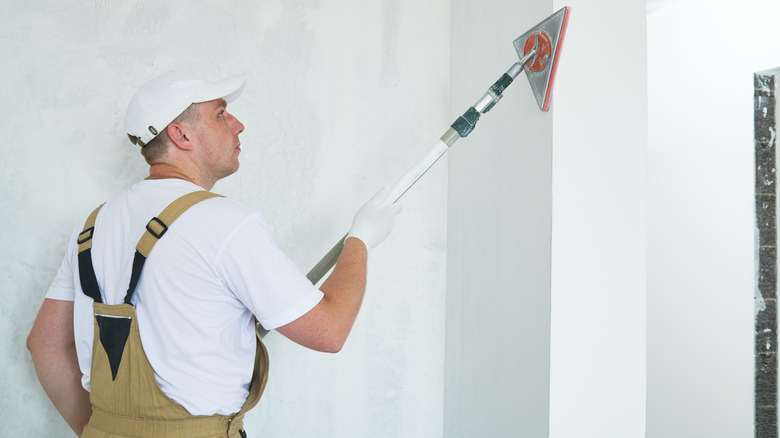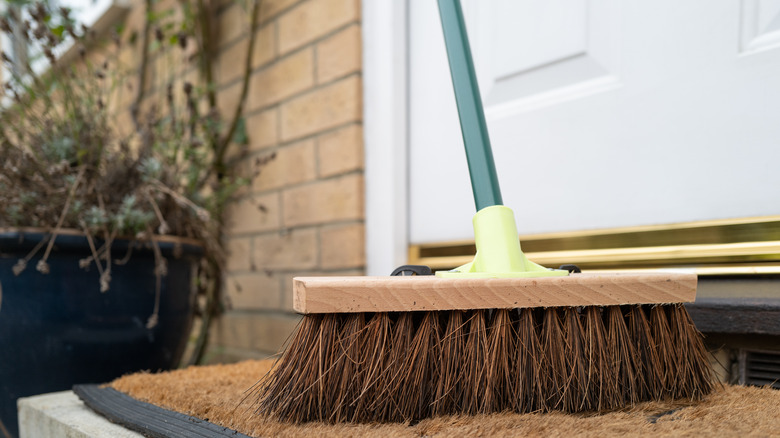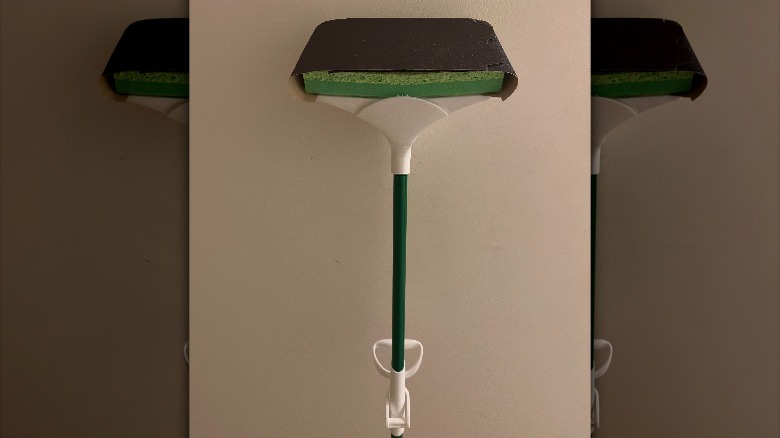How To Transform Your Broom Or Mop Handle Into A Sanding Pole When Putting Up Drywall
When renovating a home, it's common to have projects that require drywall installation. A key tool for this project is a sanding pole, especially when sanding ceilings and high walls. The length and flexibility of sanding poles make them ideal for reaching challenging spots and ensuring an even, smooth finish to your drywall by applying consistent pressure. However, if you don't have this specialized tool, a bit of creativity can be a game-changer. If you have an old broom handle, you can easily repurpose it into a useful sanding pole with just a few steps.
Broom and mop handles are generally sturdy, sufficiently long, and provide the needed flexibility — attributes that make them ideal stand-ins for professional sanding poles. This makeshift tool can provide a solution when a professional sanding pole is unavailable. The following steps will guide you in this project and allow you to finish your drywall project without a hitch.
Preparing the broom handle
Before beginning, double-check that your handle is sturdy and in good shape. It must be capable of supporting all aspects of sanding without easily breaking. If it appears weak, replace or strengthen it as needed. The first step is to disassemble the broom part by unscrewing or twisting it off. For a sponge mop, you don't necessarily need to remove the head from the handle itself.
Next, inspect the handle for rough spots or splinters. If any are identified, use sandpaper to smooth them away for increased safety and comfort when holding. This makes handling the broom handle safer overall and will simplify using it in the future!
Measure across the top end of the handle — this measurement will enable you to purchase the correct-sized sanding head that fits onto it easily. Sanding heads are readily available at most hardware stores or through online retailers. Keep in mind the larger the sanding head, the more sanding you'll be able to complete in a shorter amount of time.
Attaching the sanding head
After creating the handle, it's time to secure the sanding head. When purchasing one, double-check that it corresponds with the measurements you took of your handle. One advantage of sanding heads is their universal thread feature that fits onto various kinds of handles seamlessly.
Once you've secured an appropriate sanding head, attaching it to your broom handle should be relatively easy. Screw the top end of your handle onto the sanding head and make sure it's securely tightened. You will need to simulate the sanding action by using a little pressure to check that it's secure. If your head stays firm without wobbling or signs of loosening, then the sanding head is attached successfully. For sponge mops, you can simply lay the appropriate length of sandpaper on top of a dry, clean sponge and attach it to the head in the same manner in which the sponge clips on.
Next, you'll need to securely fasten the sandpaper to the sanding head to achieve effective and uniform sanding when working on your drywall surfaces. Confirm that the sanding head is clean and free from any previous sandpaper remnants or debris. This ensures the head will easily adhere to the new sandpaper. Align the sandpaper perfectly with the sanding head, ensuring it covers the entire surface area. Secure the sandpaper onto the sanding head. This process can vary depending on your tool, so follow the manufacturer's instructions closely. Typically, sandpaper can be secured using clips, adhesives, or a hook-and-loop system. Double-check the sandpaper attachment. It should be firmly in place, not moving around or coming loose when pressure is applied.


